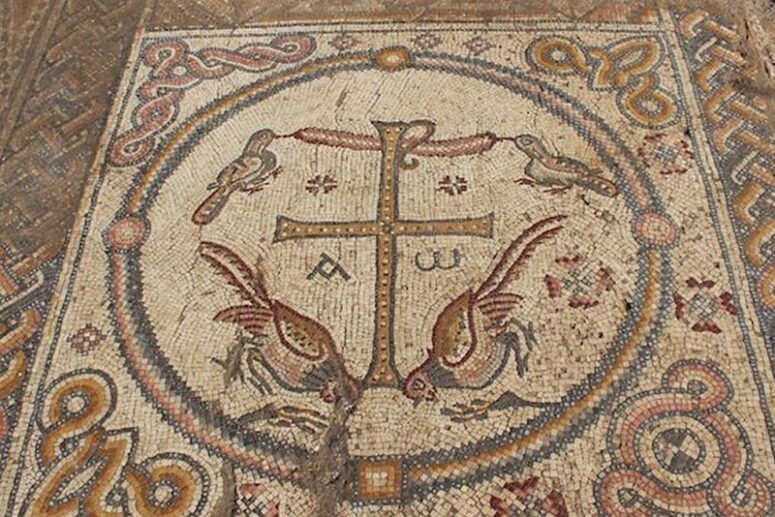
The Donkey
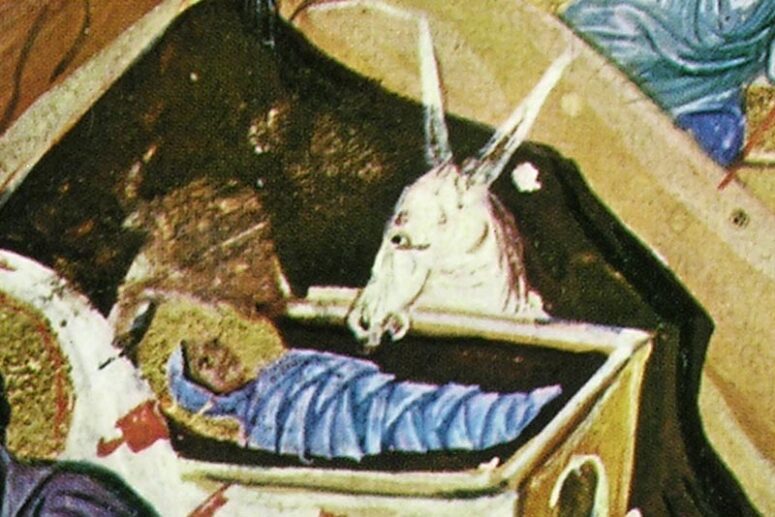
The donkey is frequently portrayed in Renaissance painting, particularly in pictures of the Sacrifice of Isaac, the Nativity, the Flight into Egypt, and the Entry of Christ into Jerusalem. The most familiar portrayal is in the Nativity scenes, where the donkey regularly appears.
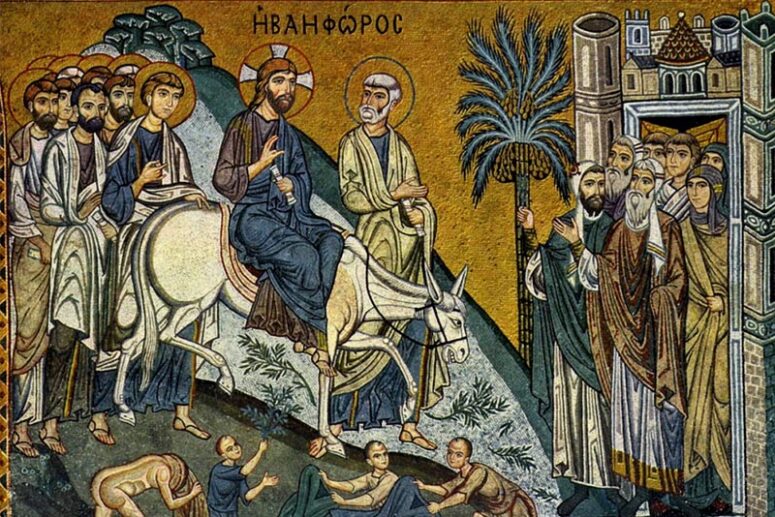
The donkey and the ox symbolize that the humblest and least of the animal creation were present when Jesus was born and that they recognized Him as the Son of God. Their presence at the birth of Christ refers to the prophecy of Isaiah 1:3, “the ox knoweth his owner, and the donkey his master’s crib.” A legend of St. Anthony of Padua may perhaps be connected with this interpretation. The saint had tried in vain to convert a Jew. He finally lost his patience and exclaimed that it would be easier to make a wild donkey kneel before the Sacrament than to make the Jew see the truth of his argument. The Jew then challenged him to make the experiment. To the wonder of the people present, the wild donkey did kneel, and a number of the Jews and unbelievers were converted to Christianity. As a domestic animal, the donkey appears in other legends of the saints.. A typical legend, to be found in the life of St. Jerome, tells of the donkey that carried wood for the monastery.
The Bee
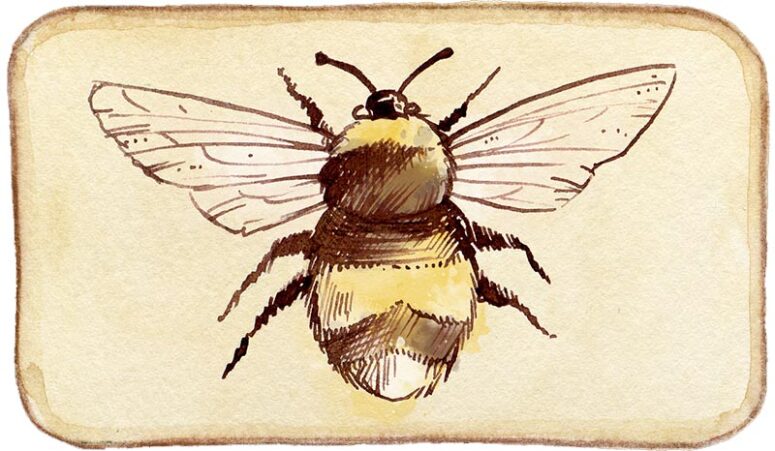
The bee, because of its industrious habits, has become the symbol of activity, diligence, work, and good order. Also, because the bee produces honey, it has come to be accepted as a symbol of sweetness and religious eloquence. Thus, the beehive is a recognized attribute of St. Ambrose, for their eloquence is said to have been as sweet as honey. The beehive is similarly the symbol of a pious and unified community. St. Ambrose compared the Church to a beehive, and the Christian to the bee, working ardently and forever true to the hive. As a producer of honey, which is a symbol of Christ, and for the virtue of its habits, the bee has been used to symbolize the virginity of Mary.
Since, according to ancient legend, the bee never sleeps, it is occasionally used to suggest Christian vigilance and zeal in acquiring virtue.
The Dove
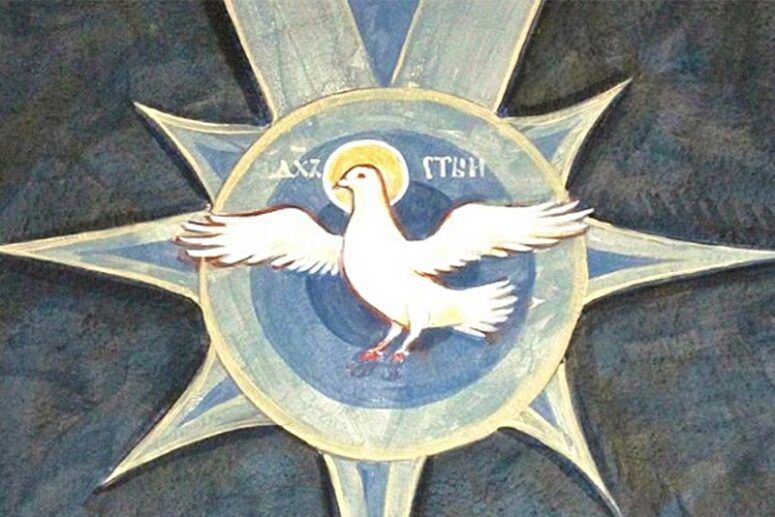
The dove, in ancient and Christian art, has been the symbol of purity and peace. In the dory of the flood, the dove, sent out from the ark by Noah, brought back an olive branch to show that the waters had receded and that God had made peace with man (Genesis 8). In the law of Moses, the dove was declared to be pure and for this reason was used as an offering for purification after the birth of a child. Often Joseph carries two white doves in a basket in scenes of the Presentation of Christ in the Temple. “And when the days of her purification according to the law of Moses were accomplished, they brought him to Jerusalem, to present him to the Lord . . . And to offer a sacrifice ac-cording to that which is said in the law of the Lord, A pair of turtledoves, or two young pigeons” (Luke 2 22, 24). As an emblem of purity the dove sometimes appears on top of Joseph’s rod to show that he was chosen to be the husband of the Virgin Mary. The dove was seen by the father of St. Catherine of Siena above her head while she was in prayer.
The most important use of the dove in Christian art, however, is as the symbol of the Holy Ghost. This symbolism first appears in the story of the baptism of Christ. “And John bare record, saying, I saw the Spirit descending from heaven like a dove, and it abode upon him” (John is 32). The dove, symbolic of the Holy Ghost, is present in representations of the Trinity, the Baptism, and the Annunciation to Mary. Seven doves are used to represent the seven spirits of God or the Holy Spirit in its sevenfold gifts of Grace. This refers to the prophecy of Isaiah 11:1 “And there shall come forth a rod out of the hem of Jesse, and a branch shall grow out of his roots: and the spirit of the Lord shall rest upon him, the spirit of wisdom and under-standing, the spirit of counsel and might, the spirit of knowledge and of the fear of the Lord.”
The dove is also connected with the lives of several saints. It is the attribute of St. Benedict because he saw the soul of his dead sister Scholastica fly up to Heaven in the shape of a white dove. The dove is also used as an attribute of St. Gregory the Great, for the dove of the Holy Spirit perched upon St. Gregory’s shoulder while he wrote.
The Fish
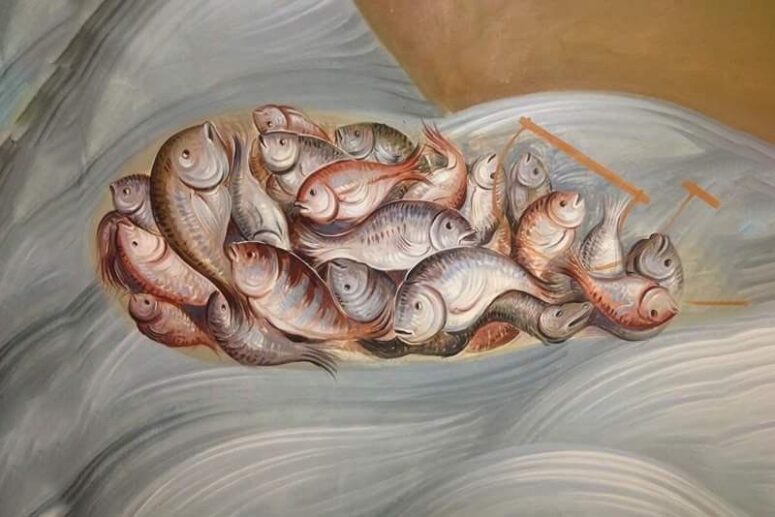
The most frequent use of the fish is as a symbol of Christ. This is beacuse the five because the five Greek letters forming the word “fish” are the initial letters of the five words: “Jesus Christ God’s Son Saviour” in this sense, the fish symbol was frequently used in Early Christian art and literature. The fish is also used as a symbol of baptism, for, just as the fish cannot live except in water, the true Christian cannot live save through the waters of baptism.
The Grasshopper or Locust

The grasshopper, or locust, was one of the plagues visited upon the Egyptians because the Pharaoh’s heart was hardened against the Word of the Lord. Accordingly, the grasshopper when held by the Christ Child is a symbol of the conversion of nations to Christianity. This meaning is also derived from Proverbs 30:27, “The locusts have no king, yet go they forth all of them by bands,” a passage early interpreted as referring to the nations formerly without Christ for their King. St. John the Baptist was said to have fed on locus.
The Lamb
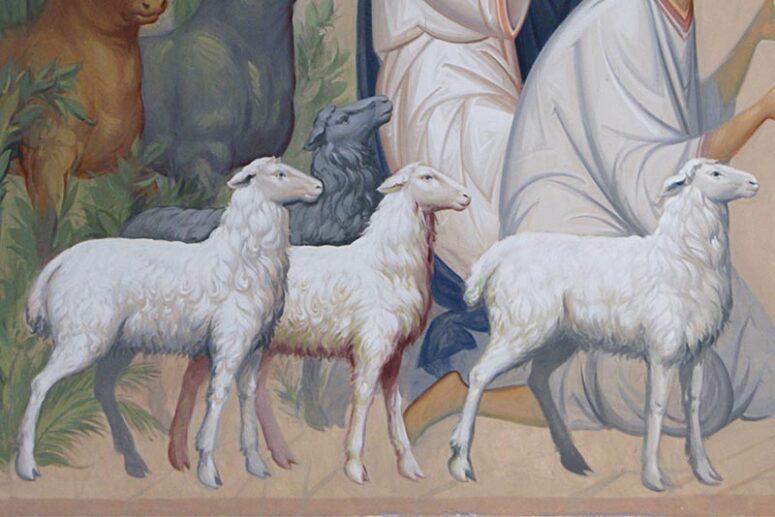
The lamb, as a symbol of Christ, is one of the favorite, and most frequently used, symbols in all periods of Christian art. Many scriptural passages give authority for this symbolism. A typical reference is John is 1:29, “The next day John seeth Jesus coming unto him, and saith, Behold the Lamb of God, which taketh away the sin of the world!” The Holy Lamb is often depicted with a nimbus, standing upon a small hill from which four streams of water flow (Revelation 14:1). The hill represents the Church of Christ, the mountain of God’s house. The dreams represent the four Holy Gospels, the four rivers of Paradise, ever flowing and refreshing the pastures of the Church on earth.
View Christ the Good Shepherd icon in our catalog
In pictures where Christ is shown as the rescuing shepherd, the lamb is also used to symbolize the sinner. This subject, usually called the Good Shepherd, is very frequent in Early Christian art, but was seldom used in the Renaissance. During the Renaissance the lamb was often depicted in representations of the Holy Family with the Infant St. John. Here, the lamb alludes to St. John’s mission as the forerunner of Christ, and his recognition of Christ as the Lamb of God at the time of His Baptism. This meaning is indicated by the portrayal of St. John the Baptist pointing to a lamb which he usually holds in his left hand. The lamb (Latin, agnus) is given as an attribute to St. Agnes, who was martyred because she declared herself to be the bride of Christ and refused to marry. It is also found as an attribute of St. Clement, who was guided by a lamb to the spot where he found water.
The Whale
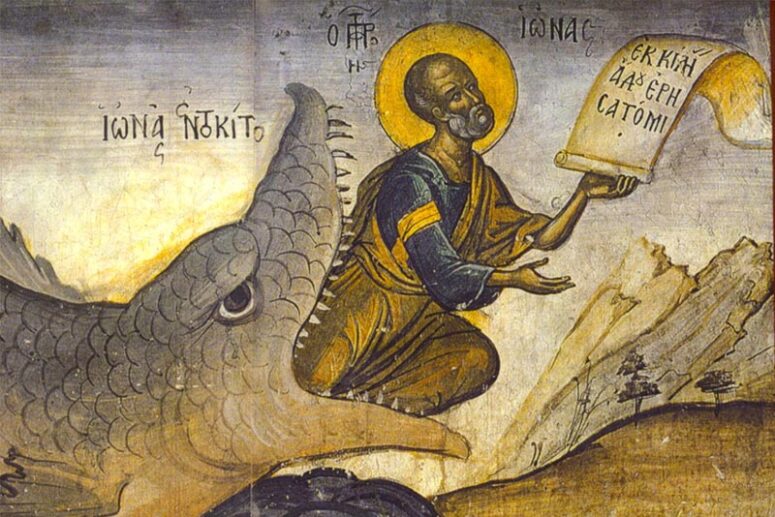
According to ancient legend, the huge body of the whale was often mistaken by mariners for an island, and ships anchored to its side were dragged down to destruction by a sudden plunge of the great creature. In this way, the whale came to be used as a symbol of the Devil and of his cunning, and the whale’s open mouth was often depicted to represent the open gates of Hell.
The whale also appears in the Biblical story of Jonah, who was swallowed by a whale and disgorged three days later. Allegorically, the experience of Jonah is likened to Christ in the sepulchre and His Resurrection after three days. Unfamiliarity with the appearance and habits of the whale, and even with the identification of the Biblical sea-monster as such, prevented the artists of the Italian Renaissance from painting naturalistic whales. Rather, Jonah’s monster was, to them, either something in the way of a dragon, a great shaggy fish, or a dolphin.
The Apple
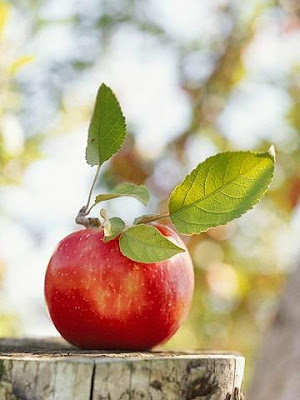
In Latin, the word for apple and the word for evil, malum, are identical. It is for this reason that the legend has grown up that the Tree of Knowledge in the Garden of Eden, the fruit of which Adam and Eve were forbidden to eat, was an apple tree (Genesis 3:3). In pictures of the tempting of Eve by the serpent in the Garden of Eden, Eve is generally shown with an apple in her hand, offering it to Adam. The apple may also be symbolic of Christ, the new Adam, who took upon himself the burden of man’s sin. For this reason, when the apple appears in the hands of Adam it means sin, but when it is in the hands of Christ, it symbolizes the fruit of salvation. Such interpretation is based upon the Song of Solomon 2:3, “As the apple tree among the trees of the wood, so is my beloved among the sons. I sat down under his shadow with great delight, and his fruit was sweet to my take.” This passage has been interpreted as an allusion to Christ.
As Christ is the new Adam, so, in tradition, the Virgin Mary is considered to be the new Eve and, for this reason, an apple placed in the hands of Mary is also considered an allusion to salvation. Three apples are an attribute of St. Dorothea.
The Grape
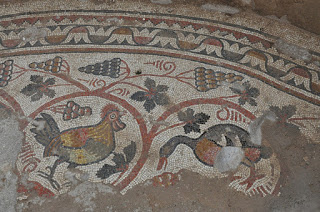
Bunches of grapes with ears of grain were some-times used to symbolize the wine and bread of Holy Communion. In general, the grape, like the Eucharistic wine, is a symbol of the Blood of Christ. Representations of labor in the vineyard sometimes signify the work of good Christians in the vineyard of the Lord; the grape vine or leaf is used as an emblem of the Saviour, the “true vine.”
The Laurel
The laurel symbolizes triumph, eternity, and chastity. The victor in ancient contests was crowned with a wreath of laurel. St. Paul contras this wreath with the imperishable wreath with which the victorious Christian is crowned (I Corinthians 9:24 – 27). This, with the fact that laurel leaves never wilt but preserve their green foliage, makes it symbolic of eternity. Its association with charity is probably derived from the pagan symbolism that the laurel was consecrated to the Vestal Virgins, who vowed perpetual charity.
The Olive

The olive is a true Biblical tree, a tree “full of fatness” which yields great quantities of oil. Its rich yield symbolized the providence of God toward His children. “The trees went forth . . . to anoint a king over them; and they said unto the olive tree, Reign thou over us. But the olive tree said unto them, Should I leave my fatness, wherewith by me they honour God and man ..?” (Judges 9:8 – 9).
The olive branch has always been regarded as a symbol of peace, and appears as such in allegorical paintings of Peace. It will be recalled that when Noah was in the ark during the flood, he sent forth a dove to find out whether the waters had receded from the earth. “And the dove came in to him in the evening; and, lo, in her mouth was an olive leaf plucked off: so Noah knew that the waters were abated from off the earth.” (Genesis 8:11). In this passage, the olive branch is symbolic of the peace God made with men. A dove with an olive twig in its beak is often used to indicate that the souls of the deceased have departed in the peace of God. As a token of peace, an olive branch is carried by the Archangel Gabriel to the Virgin Mary in scenes of the Annunciation. This symbolism was especially favored by painters of the Sienese school; they wished to avoid the representation of the lily, the customary symbol of the Annunciation, because it was also the emblem of Florence, the declared enemy of Siena.
The Palm

Among the Romans, the palm frond was traditionally the symbol of victory. This meaning was carried into Christian symbolism, where the palm branch was used to suggest the martyr’s triumph over death. Martyrs are often depided with the palm either in place of or in addition to the instruments of their martyrdom. Christ is often shown bearing the palm branch as a symbol of His triumph over sin and death. More often, it is associated with His triumphant entry into Jerusalem. “On the next day much people that were come to the feast, where they heard that Jesus was coming to Jerusalem, took branches of palm trees, and went forth to meet him, and cried, Hosanna; Blessed is the King of Israel that cometh in the name of the Lord” (John 12:12-13). A palm-tree staff is the attribute of St. Christopher, in reference to the legend that he uprooted a palm tree to support himself on his travels. After carrying Christ across the river, he thrust the staff into the ground, whereupon it took root and bore fruit. A dress made of palm leaves is an attribute of St. Paul the Hermit.
The Reed
The reed is one of the symbols of the Passion, for, on the Cross, Christ was tendered a sponge soaked in vinegar on the end of a reed. It thus symbolizes the humiliation of greatness. It is also sometimes used to represent the just, who dwell on the banks of the waters of grace. The small cross carried by St. John the Baptist is commonly made of reeds.
The Thorn
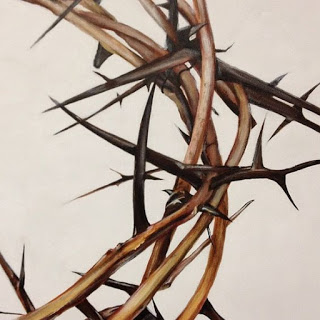
Thorns and thorn branches signify grief, tribulation, and sin. According to St. Thomas Aquinas, thorn bushes suggest the minor sins, and growing briars, or brambles, the greater ones. The crown of thorns with which the soldiers crowned Christ before the Crucifixion was a parody of the Roman emperor’s festal crown of roses. The tonsure of the priest is a reverent allusion to this thorny crown.
The crown of thorns, when shown in connection with saints, is a symbol of their martyrdom. St. Catherine of Siena is often depicted with the stigmata and the crown of thorns which she received from Christ.
The East
East, being the direction in which the sunrise appears, is symbolic of Christ, the Sun of the Universe.
Honey

The purity and sweetness of honey have made it a symbol of the work of God and the ministry of Christ. Paradise, the reward of the faithful in their labors for Christ, is known as “the land of milk and honey.”
Oil
Oil is the symbol of the Grace of God. It is used in the Church in the sacraments of baptism, confirmation, ordination, and union.
Smoke
Smoke has come to suggest vanity and all that is fleeting because it rises into the air only to disappear. Symbolically, it is a reminder of the shortness of this life and the futility of seeking earthy glory. The anger and wrath of God were ofttimes indicated by smoke. “O God, why hast thou cast us off for ever? Why doth thine anger smoke against the sheep of thy pasture?” (Psalm 74:1).
The Star

The star, lighting the darkness of the heavens at night, is a symbol of divine guidance or favor. The Star of the East, often seen in pictures of the Magi, was the star that guided the wise men to Bethlehem and stood in the sky over the manger where Christ was born. Twelve bars may symbolize the twelve tribes of Israel and the twelve Apostles. The Virgin of the Immaculate Conception and the Queen of Heaven is crowned with twelve stars (Revelation 12:1). One star is a symbol of the Virgin in her title “Stella Maris,” Star of the Sea. A star on the forehead is one of the attributes given to St. Dominic, while a star on the breast is an attribute of St. Nicholas of Tolentino.
Water
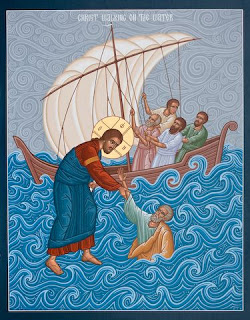
Water is a symbol of cleansing and purifying. In this sense it is used in the sacrament of baptism, symbolizing the washing away of sin and the rising to newness of life. It also denotes innocence, as when Pilate publicly washed his hands, saying, “I am innocent of the blood of this just person” (Matthew 27:24). More rarely, water suggests trouble or tribulation: “Save me, O God; for the waters are come into my soul . . . I am come into deep waters, where the floods overflow me” (Psalm 69:1, 2). The water, mixed with wine, in the Eucharist has come to denote Christ’s humanity, the wine representing His divinity.
Wings

Wings are the symbol of divine mission. That is why the angels, archangels, seraphim, and cherubim are painted with wings. The emblems of the four evangelists, the lion of St. Mark, the ox of St. Luke, the man of St. Matthew, and the eagle of St. John, are all depicted as winged creatures.
Blood
By its very nature, blood is the symbol of life and of the human soul. Christ, the Son of God, shed His blood upon the Cross to redeem mankind from its sins. “And he took the cup, and gave thanks, and gave it to them, saying, Drink ye all of it; for this is my blood of the New Testament, which is shed for many for the remission of sins” (Matthew 26:27-28). Red, the color of blood, has become the common attribute of all those martyrs who died rather than deny Christ.
The Foot
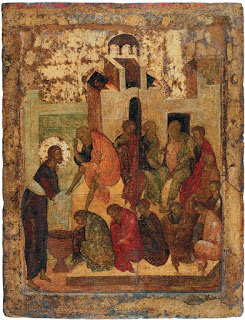
The human foot, because it touches the dust of the earth, is used to symbolize humility and willing servitude. The woman in the house of the Pharisee who washed Christ’s feet with her tears did so as a token of her humility and penitence, and her sins were forgiven (Luke 7: 38). Christ Himself washed the feet of His disciples at the Last Supper (John 13:5). It is on the basis of this act that it has become the tradition for bishops to perform the ceremony of washing feet on Maundy Thursday.
I H S, I H C
Explore hand-painted icons of Christ the Pantocrator >>
These letters are the first three letters of Ihsus, or Ihcuc, the name of Jesus in Greek. The S and the C are variant forms in the Greek alphabet. They have often been confused with the Latin phrase, “In hoc signo.” This refers to the legend that Constantine, on the eve of battle and before his conversion, had a vision. In this vision he beheld a banner on which these words were inscribed: “In hoc signo vinces” (In this sign you will conquer). After victory in the battle, he is said to have embraced the Christian religion. Furthermore, these letters are sometimes misinterpreted as being an abbreviation of the Latin phrase, “Iesus Hominum Salvator” (Jesus Saviour of Men).
This monogram, inscribed in a sun, is the sign that appeared to St. Bernardino of Siena, and which that saint is often depicted carrying in his hand.
Discover more the Crucifixtion of the Lord icons >>
I N R I: These represent the first four letters of the Latin words, “Jesus Nazarenus Rex Judaeorum,” meaning “Jesus of Nazareth, King of the Jews.” According to St. John 19:19, after Christ had been crucified, “Pilate wrote a title, and put it on the cross. And the writing was, Jesus of Nazareth, the King of the Jews.” St. John goes on to say that this sign was written in Hebrew, Greek, and Latin.
XP
XP: The two Greek letters Chi and Rho, which most frequently appear in a monogram, are the first two letters of the Greek word for Christ. The combination of these two letters readily gives the form of a cross. Furthermore, as Rho resembles “p” and Chi is similar to “x” , the monogram could be read as the Latin word pax, meaning peace.
Christ the Conqueror
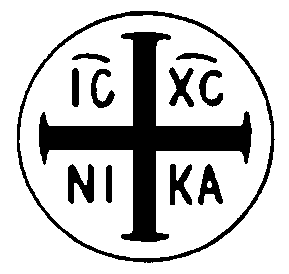
This was the ancient monogram symbolizing Christ the Conqueror. I and C are the first and last letters of the Greek word Ihcuc (Jesus); X and C are the first and last letters of Xpictoc (Christ); Nika is the Greek word for conqueror.
Bells
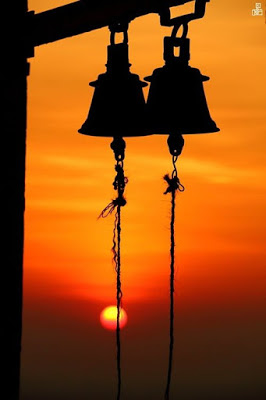
Bells in church towers and spires summon the faithful to worship. The sanctus bell at the altar announces the coming of Christ in the Eucharist. St. Anthony Abbot is frequently portrayed with a bell attached to his crutch as a warning to demons.
Candles
Candles play a great and varied role in churches, and according to their use and numbers the teaching of the Church is expressed symbolically. Examples of this are the six lights on the altar, representing the Church’s constant round of prayer; the sanctuary lamp; the Eucharistic candles, symbolizing the coming of Christ in Communion; the Paschal candle, symbolical of the risen Christ during the Easier season. Candles are also symbolical when used in groupings: three candles represent the Trinity, or seven candles signify the Seven Sacraments. The Bishop’s Candle is used when the bishop is pontificating, or is the celebrant of the Mass. The use of candles for devotional purposes, at shrines and in processions, is universal
and frequently seen in Renaissance art. The candlestick, because of the symbolism attached to the candle, is usually a work of artistic beauty.
The Censer
Find out more about the censers >>
A censer is the vessel in which incense is burned. It is cup-shaped, with a pierced cover, and is suspended by chains. In the Old Testament, the censer symbolized the pleas of the worshiper that his prayer would be acceptable to God. “Let my prayer be set forth be-fore thee as incense; and the lifting up of my hands as the evening sacrifice” (Psalm 141:2). In Christian symbolism, the smoke of the incense symbolizes the prayers of the faithful ascending to Heaven. The censer is an attribute of St. Laurence and St. Stephen.
The Cross
Discover the wide array of altar crosses available in our catalog >>
The cross is one of the oldest and most universal of all symbols. It is, of course, the perfect symbol of Christ because of His sacrifice upon the Cross. In a broader sense, however, the cross has become the mark or sign of the Christian religion, the emblem of atonement, and the symbol of salvation and redemption through Christianity.
There are many and varied forms of the cross. In Christian art, two major types, known espectively as the Latin cross and the Greek cross, are most commonly found.
The Latin cross has a longer upright than crossbar. The intersection of the two is usually such that the upper and the two horizontal arms are all of about equal length, but the lower arm is conspicuously longer. This cross is used to symbolize the Passion of Christ or the Atonement. Five red marks or jewels are sometimes placed on the face of the cross to represent the five wounds Christ suffered while being crucified. In addition Christ’s crown of thorns is frequently shown with the cross or hanging upon it. Tradition says that Christ was crucified on a Latin cross.
The Latin cross fastened to the top of a staff or reed is the attribute of St. Philip, who is also sometimes represented with a plain Latin cross in his hand or with a Tau cross on the end of his staff. The Latin cross, alone or in combination with other pictorial elements, is used as an attribute of numerous other saints. The plain Latin cross is borne by St. Reparata and St. Margaret. John the Baptist frequently bears a cross made of reeds. St. Helena is depicted with a cross with hammer and nails or with a cross borne by angels. St. Anthony of Padua has a flowered cross, while St. Catherine of Siena is given a cross with a lily. St. George of Cappadocia and St. Ursula are painted with a banner on which there is a red cross.
The Greek cross has four equal arms. This cross is used more often to suggest the Church of Christ than to symbolize Christ and His sacrifice for mankind.

Another well-known form of the cross is the St. Andrew cross, which consists of crossed arms which are not at right angles to each other, but diagonally placed in the shape of an X. The origin of this form is attributed to St. Andrew, who, when condemned to be crucified, requested that he be nailed to a cross of a different form than that upon which Christ was sacrificed. In true humility, St. Andrew believed that, even in martyrdom, he was unworthy to approach the likeness of his Redeemer. The St. Andrew cross has, therefore, come to be a symbol of humility in suffering.
An older form of the cross is the Egyptian or Tau cross, which consists of three arms only, arranged in the shape of the letter T. This is known as the Old Testament cross. Tradition says that it was upon such a cross that Moses lifted up the serpent in the wilderness, foreshadowing the lifting up of Christ upon His Cross (John 3:14). The Tau cross is occasionally one of the attributes of St. Philip because, according to one version of his martyrdom, he was crucified on a cross of this type. It is also one of the attributes of St. Anthony Abbot.
Two adaptations of the cross known as Ecclesiastical crosses are used to distinguish different ranks in the hierarchy of the Church. The double cross, that is, a cross with two crossbars, is used to signify patriarchs and archbishops, while the triple cross, with three crossbars, is used exclusively by the Pope.
The Chalice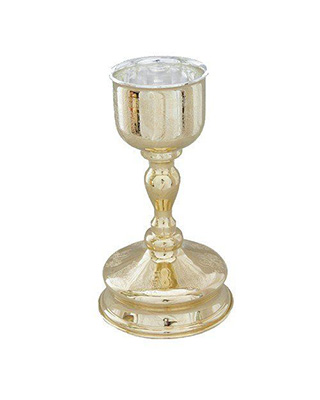
Uncover a variety of liturgical supplies >>
A chalice is the cup from which the consecrated wine and water of the Eucharist are partaken at Holy Communion. It refers to the Last Supper and the sacrifice of Christ upon the cross. “and he took the cup, when he had given thanks, he gave it to them: and they all drank of it. And he said unto them, This is my body of the New Testament, which is shed for many” (Mark 14: 23,24) Thus, the chalice is a symbol of the Christian faith. Its significance goes back to the Old Testament, where an allusion to the Eucharist may be found in Psalm 116:13, “I will take the cup of salvation…” Also St.Paul conveys this idea in I Corinthians 10:16, “The cup of blessing which we bless, is it not the communion of the blood of Christ?” The chalice with a serpentis the attribute of St.John the Evangelist. The chalice and wafer are attributes of St.Barbara; the broken chalice , of St.Donatus.
Bread

Bread has always been a symbol of the means of sustaining life, hence the phrase, “Bread is the staff of life.” In the Old Testament bread was the symbol of God’s providence, care, and nurture of His people. He sent manna to the children of Israel in the wilderness. “And when the children of Israel saw it, they said one to another, It is manna: for they wist not what it was. And Moses said unto them, This is the bread which the Lord hath given you to eat” (Exodus 16:15). Christ gave new meaning to this symbolism when He said, “… I am the bread of life: he that cometh to me shall never hunger ..:” (John 6:35). At the Last Supper, Christ used bread as the symbol of His sacrifice upon the Cross. “And he took bread, and gave thanks and brake it, and gave unto them, saying, This is my body which is given for you: This do in remembrance of me” (Luke 22:19).
Three loaves of bread are given to St. Mary of Egypt as an attribute, for she went forth into the desert to a life of solitude and prayer, bearing with her three loaves of bread. A raven bearing a loaf of bread is one of the attributes of St. Paul the Hermit, for the raven brought him bread during his many years in the wilderness. A loaf of bread is also used occasionally as an attribute of St. Dominic, on the basis of the legend of his obtaining bread for his monastery by divine intervention.
Alpha and Omega
Alpha and Omega are symbols used by God to describe Himself in the Revelation of Saint John the Theologian. The New Testament was written in Greek, where the first letter of the alphabet is alpha, and the last letter is omega. By using such symbols God shows that He is the beginning and the end of all things.
“I am the Alpha and the Omega, the Beginning and the End” – Revelation 21:6
Rainbow
The book of Genesis says that God created the rainbow after the Great Flood as a sign of the covenant between God and man. God said that the rainbow is also a sign that He will never again allow the waters to flood the Earth again.
“God said to Noah and to his sons with him: “I now establish my covenant with you and with your descendants after you and with every living creature that was with you—the birds, the livestock and all the wild animals, all those that came out of the ark with you—every living creature on earth. I establish my covenant with you: Never again will all life be destroyed by the waters of a flood; never again will there be a flood to destroy the earth” – (Genesis 9:8-11)

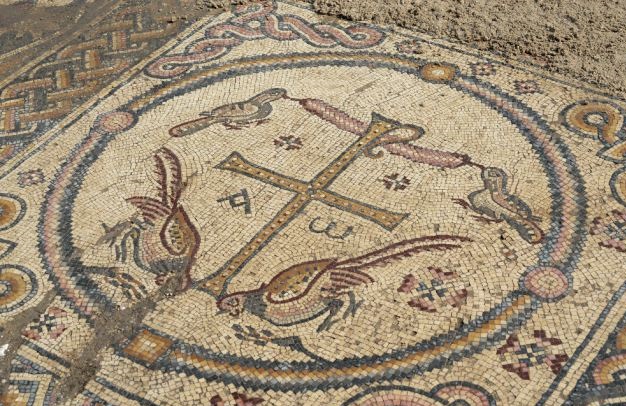

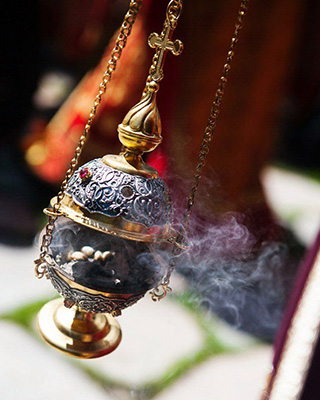


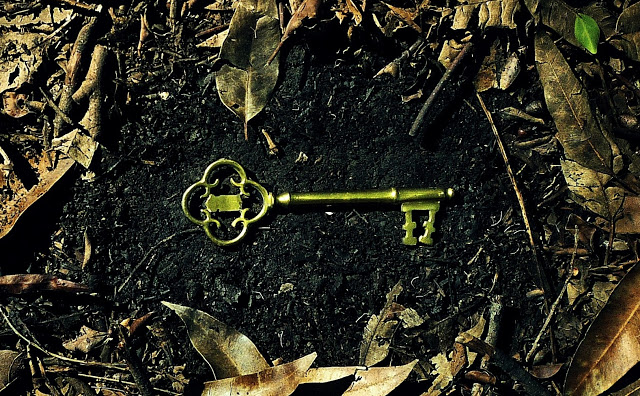

There are three main related factors that contributed to the growth and expansion of Christianity, and ultimately its success. These were a combination of political, social and economic factors. open heavens daily
Christianity hangs on the resurrection of Jesus Christ and the Martyrdom of the original Christians who went to death confessing the aforementioned resurrection as true. Expansion owed to politics/economics came after a sect of Jews went to death proclaiming the validity of a raised Jesus.
how refreshing……more about symb
In an Icon of Christ, what does the “sun and the moon” placed on the forehead, off center on the major side) represent or mean?